How to Draw a Realistic Car
Not so long ago we showed you how to draw a 3d car, and in this tutorial, we will show you how to draw a realistic car.
Volume and realism in these articles are achieved by a relatively large amount of detail and the presence of a large number of complex shadows.
In this guide, we will explain how to sketch all these details and how to apply shadows correctly to make the car look as realistic as possible.
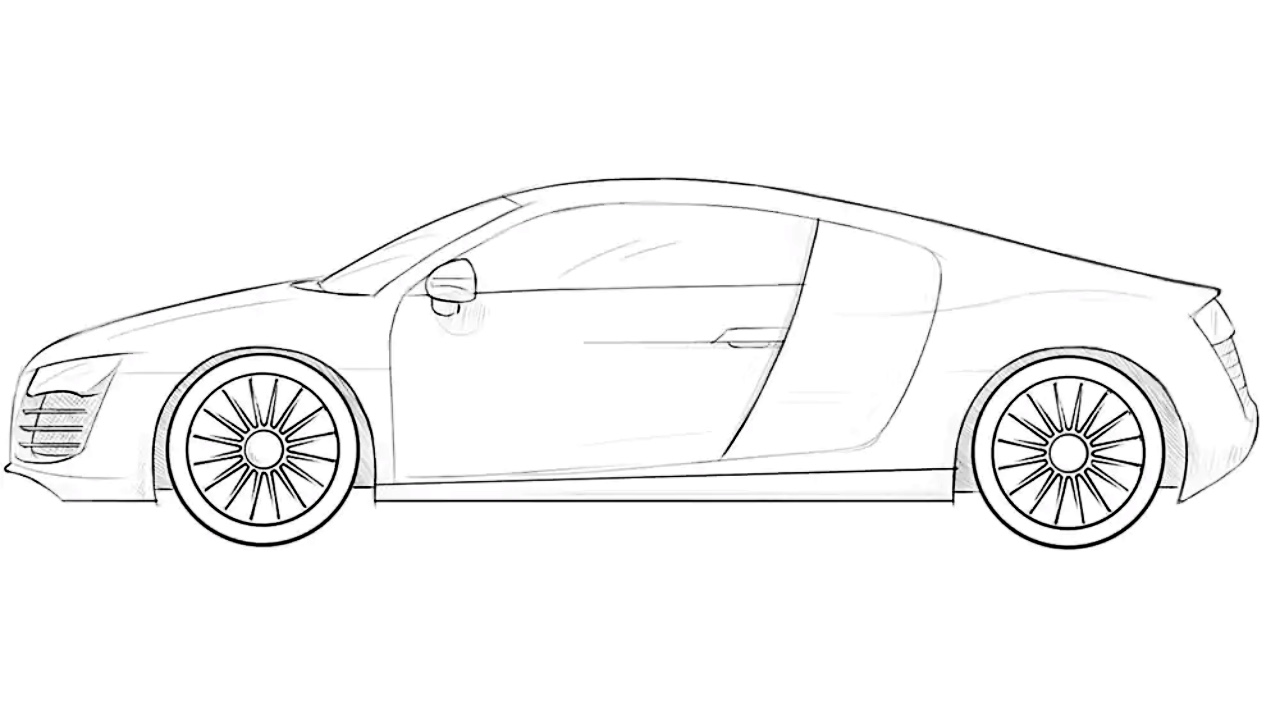
How to draw a realistic car: step-by-step tutorial
Step 1 – Mark the car’s proportional guidelines
First, sketch the basic outline of the realistic car. Use very light strokes to represent the main curves and dimensions. Keep these guidelines loose, as they will be adjusted several times during the process. The goal is to outline proportions typical for a lifelike automobile sketch.
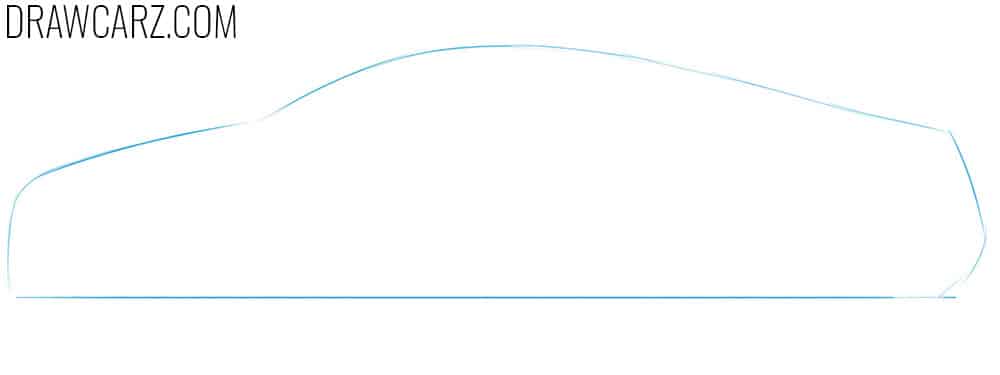
Step 2 – Indicate the tires, windows, and lights
Draw two perfectly smooth circles for the car wheels, trying to give them a realistic shape. Above them, sketch the window frame so its top line follows the shape of the roof. Add the headlight and taillight with simple shapes. In a detailed vehicle drawing, smooth and round wheels are a very important part of work.
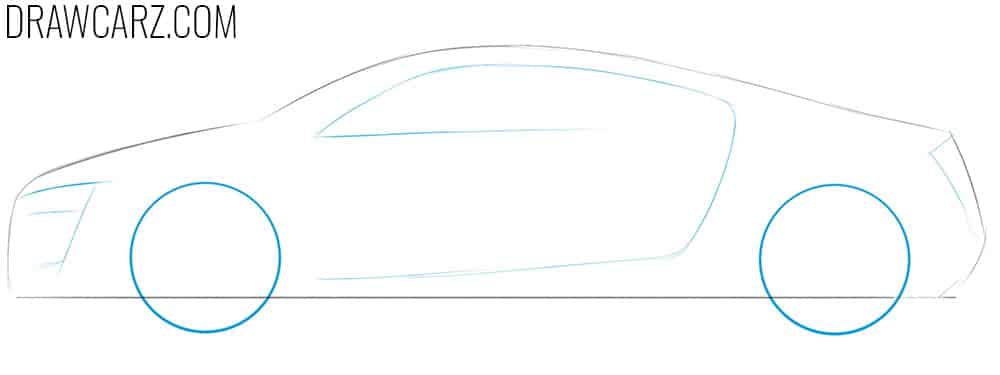
Step 3 – Draw the arch and rim geometry
Add wheel arches over both tires using smooth, curved lines. Inside the wheels, place circular rims with precise outlines. For a realistic vehicle sketch, these round and symmetrical elements are crucial. Adjust the contours of the headlight to make it more distinct and believable.
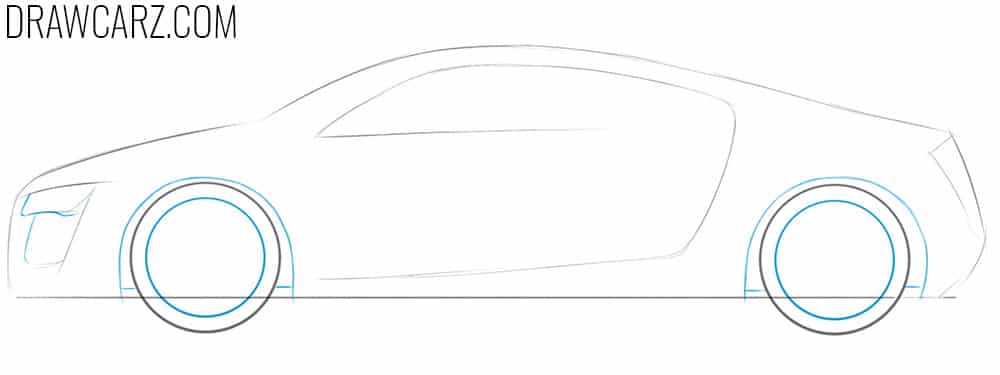
Step 4 – Complete the frontal elements
Refine the hood, separating it from the windshield with a curved line. Draw the decorative lines of the air intake below the headlight of the car, and outline the front bumper, giving it more realistic shape. These elements help create a more realistic and believable car body. You can illustrate a larger grille or simpler shape.
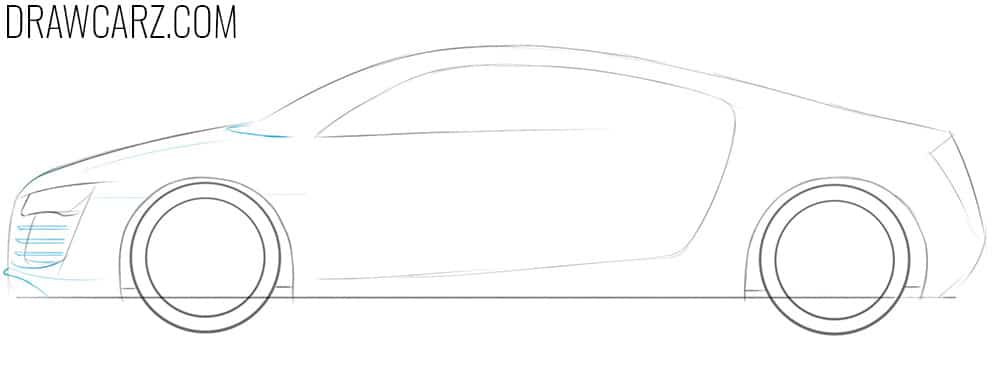
Step 5 – Draw in detail the car door and mirror
Trace and detail the visible part of the windshield, then outline the side window and door. Make sure the back line of the door follows the shape of the side intake. Add a rearview mirror and a handle to complete the door panel. Small details like these make the drawing look more lifelike.
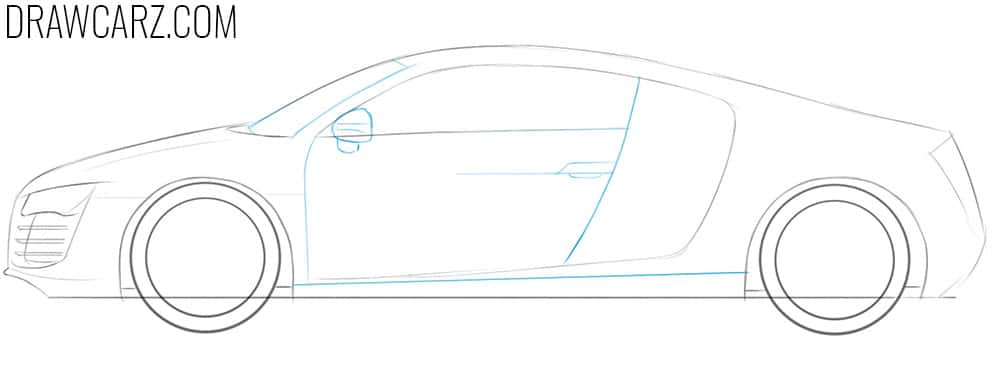
Step 6 – Draw our the rear segments of the car
Smooth the roofline to make it more refined, accurate, and natural. Then, at the back, add the taillight and rear bumper details. Draw a subtle decorative line above the rear wheel. This stage gives the body of the vehicle a finished shape.
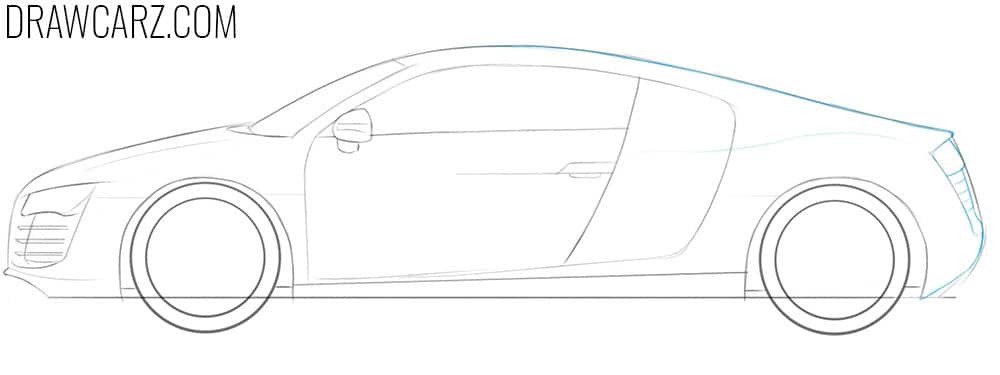
Step 7 – Construct the rim spoke geometry
Erase unnecessary construction lines to clean the sketch. Darken the essential contours and start refining the rims. Draw the central hub of the car rims and add spokes radiating outward toward the edges, trying to make them look realistic. Depending on the car type, you can depict multi-spoke alloy rims for a premium sedan or simpler hubcaps for a budget vehicle.
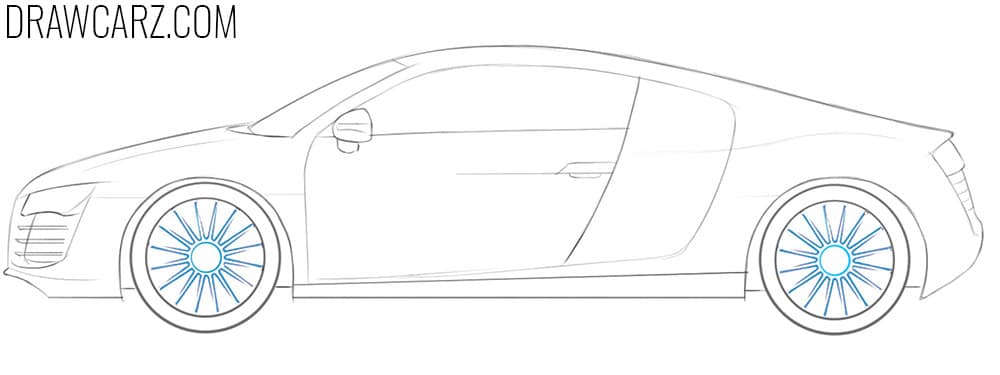
Step 8 – Render realistic shadows, halftones, and reflections
Apply shading, beginning with the darkest areas like the wheel arches, underbody, and air intake. Gradually build lighter tones using careful hatching. Add highlights on the windows and lights to simulate reflections. In realistic car art, shadows and aerial perspective make the drawing look dimensional and lifelike.
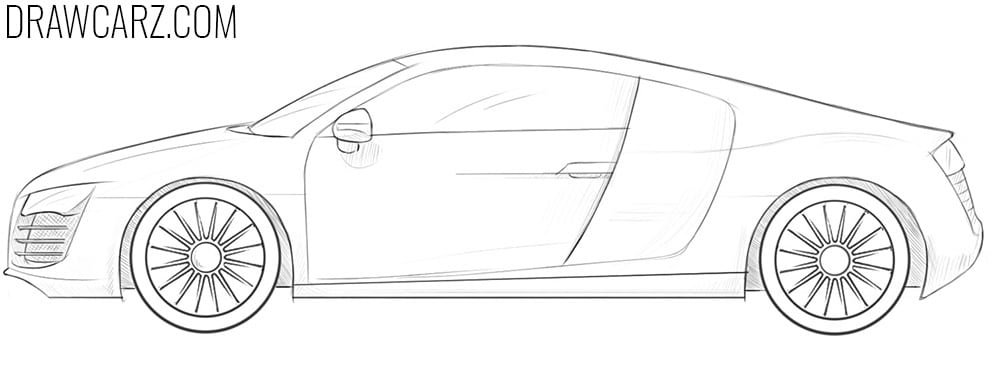
Techniques for a more realistic car drawing
Realistic drawing encompasses a wide range of techniques and methods that will make your work look much more convincing. Let’s explore the most basic ones.
For example, you can measure the overall proportions of the vehicle. Realistic cars should have correct relationships between the length of the body, the height of the cabin, and the size of the wheels.
If these elements are out of balance, the car will look more cartoonish than real.
Headlights, grilles, and other front-end features are often the most recognizable parts of a car.
Adding small details such as the shape of the bulbs, light reflections, or brand-specific grille patterns can make the car drawing more realistic.
Glass surfaces reflect the environment. Adding subtle reflections or light streaks on the windshield and side windows helps make the vehicle look more polished and believable.
Avoid leaving them completely blank, as that flattens the design.
Instead of simple circles, show the tread of the tires and the design of the rims. These details may seem small, but they can dramatically improve the realism of your vehicle sketches.
Don’t just shade randomly – observe how light falls on the vehicle. Surfaces facing the light should be brighter, while areas under fenders, bumpers, and side skirts should be darker.
Through the windows, lightly sketch the steering wheel, seats, or dashboard. Even minimal interior details help prevent the car from looking empty.
More practice
Drawing a realistic car requires attention to proportions, perspective, and detail. Unlike simplified sketches, here we tried to make the vehicle look convincing.
For the basics, visit our fundamental car drawing tutorial, where we explain step by step how to construct an automobile body, apply shading, and add small details that create a lifelike effect. This lesson is a solid starting point for learning the basics of realistic automobile sketching.
For a simpler start, be sure to visit our easy car drawing lesson, where we show the process using very basic steps. In that lesson, we explain how to convey the overall shape without adding complex shadows or fine details. It is a great option for beginners who want to practice sketching a vehicle quickly and clearly.
To apply these principles on a larger scale, see our pickup truck drawing guide, which shows how to render a heavy vehicle with proper outlines and details. Trucks are especially useful for practicing volume and perspective.
And if you want to sketch something more related to speed and style, check out our sports car tutorial, where we illustrate how to depict sleek, low-profile bodies with aerodynamic lines.


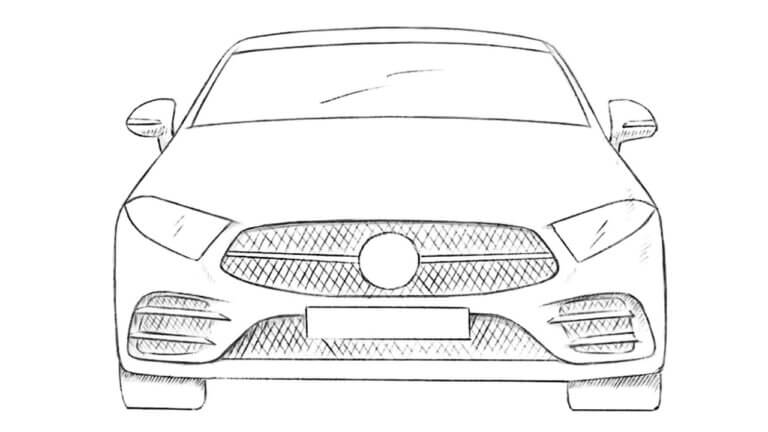
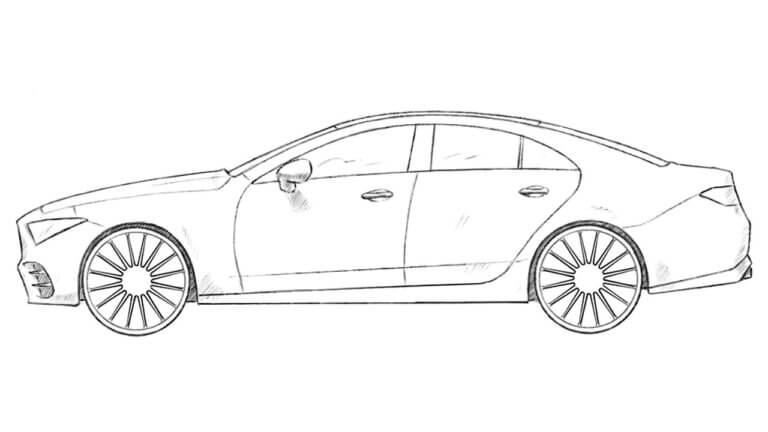
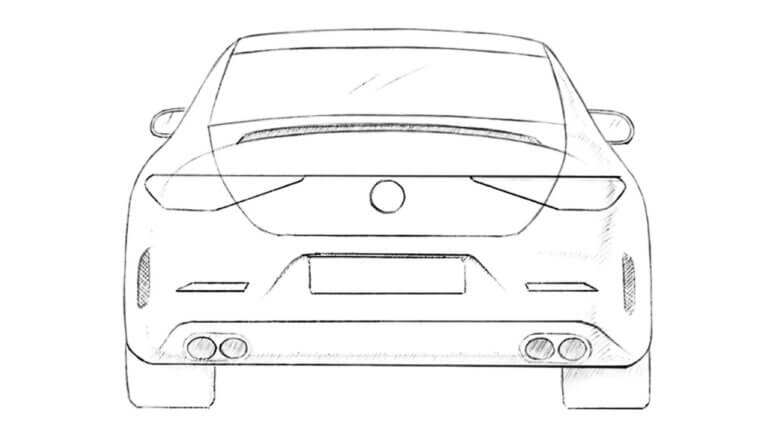
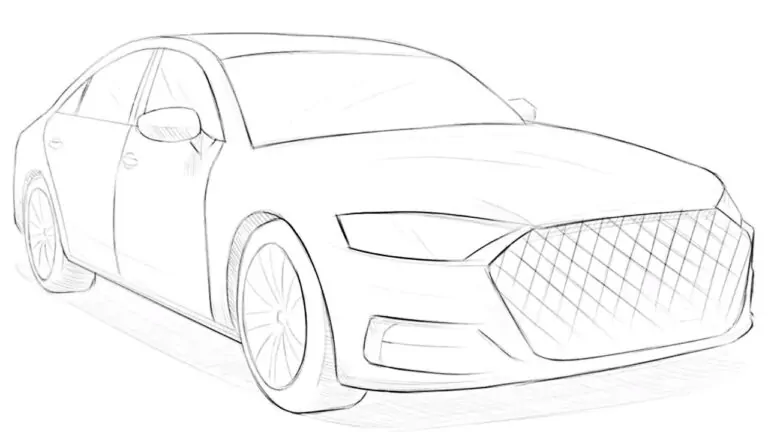
Absolutely great masterpiece!!!
i really love these drawings and they help me a lot in my assignments!!!
😀 Great Job!!
Hi. Thank you so much.
Wow
Thanks, glad you enjoyed the drawing!
can you maybe do a 3D dodge hellcat or demon with the wheels turned
Great suggestion, a 3D view of a Dodge Hellcat or Demon with details and dimensional shadows would make for an interesting tutorial – we’ll consider it.